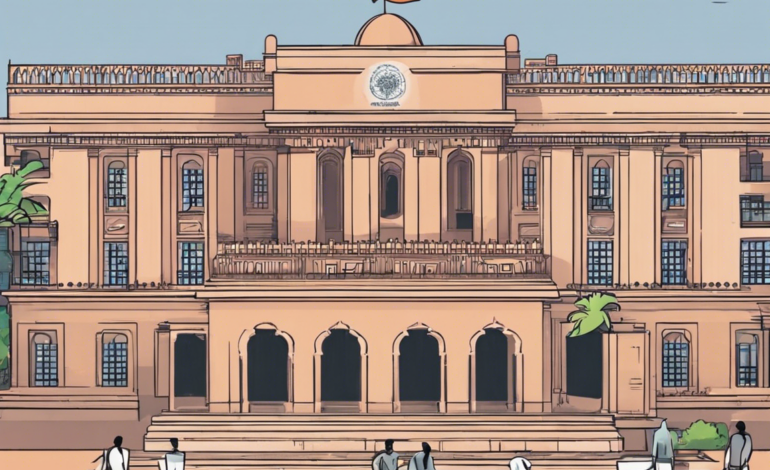
Uncovering the Secrets of Sindhu Ghati Sabhyata
The Sindhu Ghati Sabhyata, also known as the Indus Valley Civilization, was one of the earliest and most advanced urban civilizations that thrived in the Indian subcontinent around 3300–1300 BCE. This ancient civilization, which was rediscovered in the 1920s, had a well-developed urban infrastructure, advanced architecture, sophisticated drainage systems, and a thriving economy. In this comprehensive blog post, we will delve into the secrets of the Sindhu Ghati Sabhyata, exploring its origins, social structure, economy, trade networks, culture, and eventual decline.
Origins of Sindhu Ghati Sabhyata
The Sindhu Ghati Sabhyata was located in present-day Pakistan and northwest India, primarily along the Indus River and its tributaries. The civilization is believed to have emerged around 3300 BCE and reached its peak around 2600 BCE. The cities of Harappa and Mohenjo-Daro are two of the most famous sites associated with this ancient civilization. Archaeological evidence suggests that the people of the Indus Valley had a well-organized urban society with a sophisticated agricultural system.
Social Structure and Governance
The social structure of the Sindhu Ghati Sabhyata was believed to be relatively egalitarian compared to other contemporary civilizations. The society was divided into different occupational groups, including artisans, traders, farmers, and priests. The existence of standardized weights and measures indicates a centralized authority regulating trade and commerce. Moreover, the presence of granaries suggests some form of central authority or governance to manage resources.
Economy and Trade Networks
The economy of the Sindhu Ghati Sabhyata was primarily agrarian, with the Indus River providing fertile soil for agriculture. The inhabitants cultivated wheat, barley, peas, and cotton. Trade was an essential aspect of the civilization, with evidence of long-distance trade connections with Mesopotamia, Oman, and Egypt. Archaeological findings, such as seals and artifacts, indicate a well-established trade network encompassing goods like carnelian beads, metals, and pottery.
Advanced Urban Planning and Architecture
One of the hallmarks of the Sindhu Ghati Sabhyata was its advanced urban planning and architecture. The cities of Harappa and Mohenjo-Daro showcased grid-like street patterns, multi-story houses made of baked bricks, public baths, and drainage systems. The Great Bath at Mohenjo-Daro is a significant architectural marvel, believed to have had ritualistic or religious importance.
Written Language and Script
One of the enduring mysteries of the Sindhu Ghati Sabhyata is the undeciphered script found on seals, pottery, and other artifacts. The script consists of various symbols and characters, but scholars have yet to decipher its meaning. The absence of extensive written records hinders our understanding of the civilization’s language, literature, and administrative system.
Decline and Disappearance
The decline of the Sindhu Ghati Sabhyata remains a subject of debate among historians and archaeologists. Various theories suggest factors such as environmental changes, natural disasters, invasions, or shifts in trade patterns. The gradual drying of the Saraswati River, thought to be a lifeline for the civilization, might have contributed to its decline. The eventual disappearance of the Sindhu Ghati Sabhyata led to a period of relative cultural stagnation in the region until the emergence of new kingdoms and empires.
Legacy and Contributions
Despite its eventual decline, the Sindhu Ghati Sabhyata left a lasting legacy in the Indian subcontinent. The civilization’s contributions in urban planning, standardized weights and measures, metallurgy, and agricultural practices laid the foundation for future societies in the region. The intricate drainage systems and well-planned cities of the Indus Valley continued to influence later civilizations in South Asia.
FAQs about Sindhu Ghati Sabhyata
1. What is the significance of the Indus Valley Civilization?
The Indus Valley Civilization, also known as the Sindhu Ghati Sabhyata, was one of the earliest urban civilizations in the Indian subcontinent, known for its advanced urban planning, architecture, and trade networks.
2. How old is the Indus Valley Civilization?
The Indus Valley Civilization emerged around 3300 BCE and reached its peak around 2600 BCE before eventually declining around 1300 BCE.
3. What were the major cities of the Indus Valley Civilization?
Harappa and Mohenjo-Daro were two of the major cities associated with the Indus Valley Civilization, known for their well-planned layouts, advanced drainage systems, and sophisticated architecture.
4. Why is the script of the Indus Valley Civilization still undeciphered?
Despite numerous attempts by scholars, the script of the Indus Valley Civilization remains undeciphered due to the lack of a bilingual text or Rosetta Stone equivalent for comparison.
5. What were the main economic activities of the Indus Valley Civilization?
The economy of the Indus Valley Civilization was primarily agrarian, with a focus on agriculture, trade, and craftsmanship. The inhabitants cultivated crops, engaged in trade with other regions, and produced various goods.
6. What are some theories about the decline of the Indus Valley Civilization?
Theories about the decline of the Indus Valley Civilization include environmental changes, natural disasters, invasions, and shifts in trade patterns. The drying of the Saraswati River is also believed to have played a role in its decline.
7. How did the Indus Valley Civilization influence later societies in South Asia?
The Indus Valley Civilization’s contributions in urban planning, metallurgy, agriculture, and trade networks influenced later societies in South Asia, laying the foundation for future developments in the region.
8. What are some notable artifacts from the Indus Valley Civilization?
Seals, pottery, sculptures, jewelry, and tools are some of the notable artifacts discovered from the Indus Valley Civilization, providing insights into the civilization’s culture, trade networks, and technological advancements.
9. How does the Indus Valley Civilization compare to other ancient civilizations?
The Indus Valley Civilization is often compared to other ancient civilizations like Mesopotamia and Egypt for its urban planning, trade networks, and technological achievements, highlighting its significance in early human history.
10. What are some ongoing archaeological discoveries related to the Indus Valley Civilization?
Ongoing archaeological excavations and research continue to uncover new insights into the Indus Valley Civilization, including findings related to its urban infrastructure, cultural practices, trade connections, and daily life of its inhabitants.

